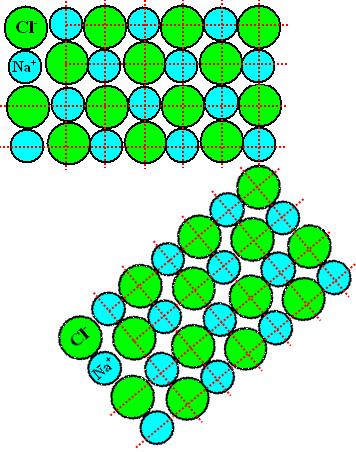 |
Link to the solution
|
|
Look at a grain boundary in a simple ionic crystal. Take two grains, for example, that are only rotated with respect to each other and are joined along some grain boundary as shown below | ||||
|
Construct a grain boundary by filling in material | ||||
| Show that in most cases the boundary will be charged and contain dipoles | |||||
|
Link to the solution | |||||
![]() 3.2.1 Mechanisms of Polarization
3.2.1 Mechanisms of Polarization
© H. Föll (Electronic Materials - Script)